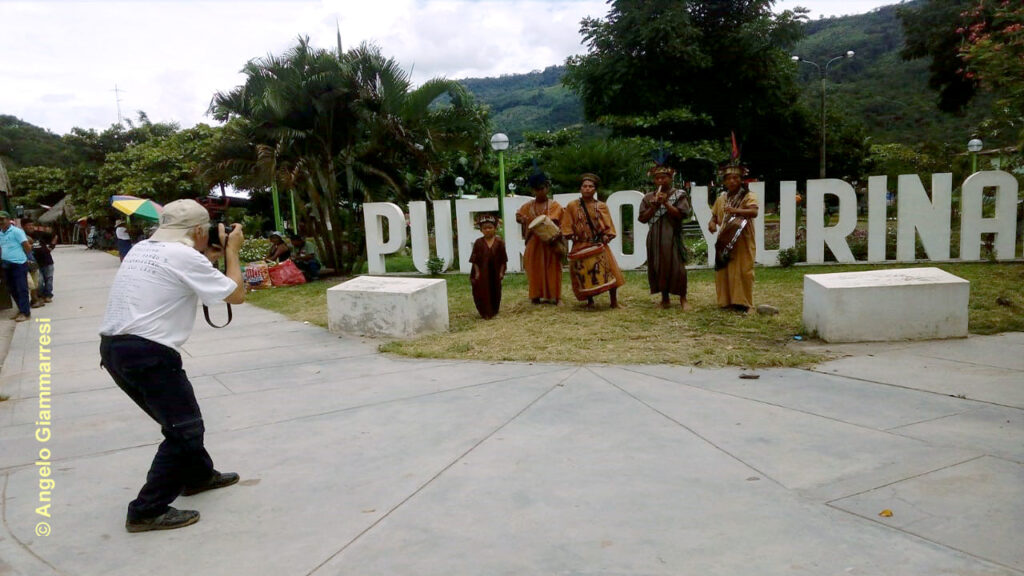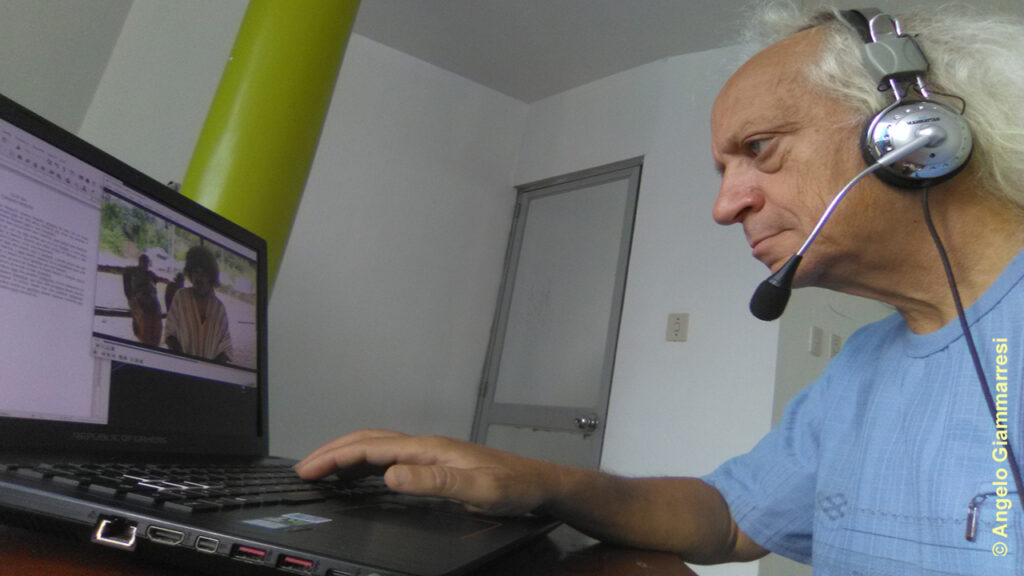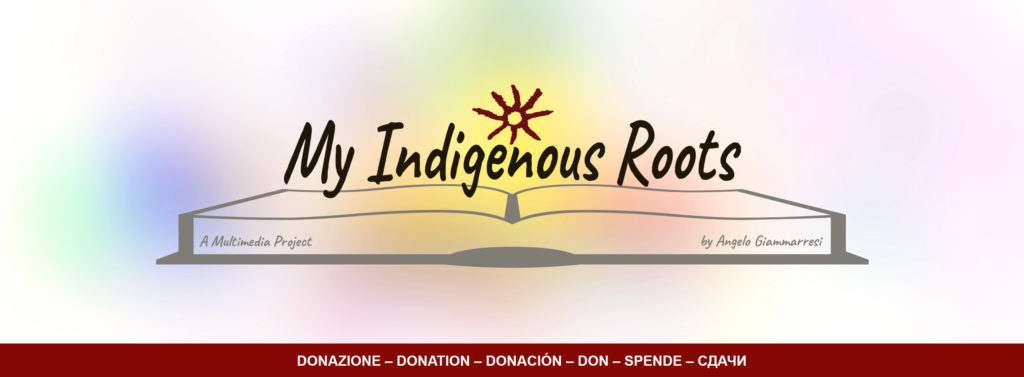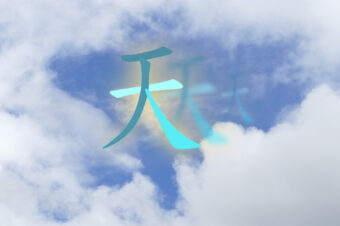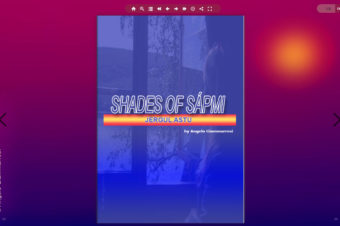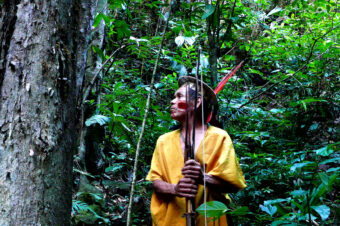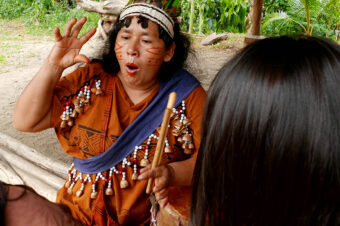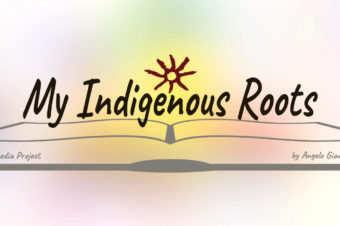“Most of the native communities of Peru that I know personally or by relation of direct members, are in the position of being gripped in the grip of the results of historical events on the one hand and, on the other, of the stereotyped thinking of non-indigenous peoples towards them.“
With these words taken from the introduction of MAPINIKI, which you can read in full by visiting the book, I would like to accompany you in the background of the creation of my first innovative text on the Ashaninka and Yanesha Indigenous people who live mainly in the Junin and Pasco regions of Selva Central. La Selva is part of that triptych of areas of territorial morphology that even any Peruvian illiterate can recite as a ejaculatory: La Costa, la Sierra (Mountain) and La Selva (forest or jungle).
A little for everyone I think that the word “indigenous” has a certain charm or evokes childhood memories of stereotypical scenes proposed in old films, so in reality it also happened for me. I had known Peru since 1990 (not in the sense of those who take a little trip to a foreign country and are convinced that they can describe it to friends in the parish of their country), during my first visit I had crossed it by all possible means in length and wide, for about 3 months. However, there is always some area you don’t know and the Chanchamayo area was among them.
Gutnher Rengifo, owner of the GrepTours from Lima and my longtime friend, on my return in 2017 he told me: “You must visit La Merced and Chanchamayo, that’s the place for you!”
Although skeptical and hesitant, I picked up the suggestion and here I am on one of the various comfortable and modern buses that now connect every part of Peru, nothing to do with the old shaky buses that often stopped on the road and the journey could last even two or three days instead of 6 or 10 hours. Early in the morning around 6 am I am in the midst of what is a new world in the new world. With good reason, when a Peruvian tells you “in Peru, we have three different areas: the Costa, the Sierra and the Selva [actually the micro-climates studied are about 32]”, he is not making fun of you because they are three completely different worlds by climate, race and culture.
I liked the climate very much (meteorologically it is spring all year round and without mosquitoes), I stayed there the time necessary to frame the socio-cultural context according to my documentary work and so I returned again in 2018 convinced to stop only a couple of months.
I rented a room and after a few days I began to discover that the previous experience had been almost only a trip, there was a lot to know both from the landscape point of view (the falls of water that people pompously call waterfall or catarate abound) and from the cultural one, it struck me, for example, that one very late evening in pitch black you could hear rhythmic music that I knew belonged to the ritual of a procession. At first I thought it was a record from the neighbor or the music of an adjacent room but the sound gradually approached. I then realized that in the darkness a group of “tunanteros” proceeding from the center of the city along the provincial road paying homage to the “Señor de Muruhuay” heading towards the headquarters of the association that hosted him. In a future article I will tell more about this and other rituals.
BUT how was MAPINIKI born? Well, for those who do not know what MAPINIKI is, I invite you to browse for free the preview and he will realize the monumental work that I have made. The book consists of 296 pages and in the multimedia and interactive version includes 75 videos too. MAPINIKI is also available in EPUB in the online store of this site, as well as on Kobo, Lulu.com, Play Google and in paperback version on Amazon.com.
MAPINIKI was born almost by chance, thanks to a strange red flower encountered along a path that from the indigenous community of San Jeronimo through the humid bosque or rain forest leads to the sacred place called “El Tambo del Diablo”, the anecdote is well described in the first pages of the preview.
BUT what does MAPINIKI mean? The term has its own history that I invite you to discover by going through the book, the preview of numerous pages will already tell you some of the anecdotes that accompany its realization and you certainly will not be bored when you immerse yourself in the over 70 topics ranging from cooking to dances, from poisons to marriage and ancestral music.
You might think that all you need is some pennies, a video camera and you’re done! None of this dear reader friend. You are too used to the new mentality of “everyone can do everything” and maybe with free equipment or filming with a cell phone. If you are of this kind, forget it and read something else, here there is no place for the mediocre and the fainthearted.
MAPINIKI was born from curiosity, tenacity, professionalism, solidarity and above all a lot of respect for the community that hosted me. Over nine months of work, field research and excursions even to extremely dangerous places and the deep friendship created between me and the two representatives of the Ashaninka and Yanesha families: Raul Vasquez Quinchocre and Galindo Ampicha Ramos. 
MAPINIKI in its multimedia structure is the result of the collaboration that I have for years with the developers of fliphtml5, a software that allows you to create your own static documents and enrich them with numerous interactivity.
MAPINIKI is part of the ambitious project to make known the traditions and peoples of the world that are often invisible that I started to develop in 1990 and which in 2016 took the name of “My Indigenous Roots” My Indigenous Roots which already has many videos and various multimedia books; if you want you can make a very small donation and download your gift of your choice. Visit the project page to find out more or click on the image below
I thank you for your support. Kametsa Pasonki maroni, Parasyos!

© 2024 – Angelo Giammarresi


